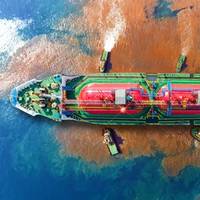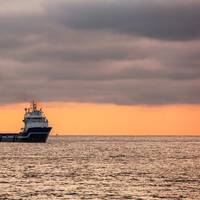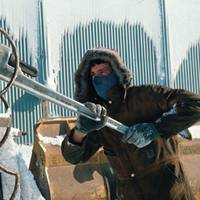Tanker Spills and Preserving OPA 90 Experience

The maritime industry has seen a very long sequence of environmental regulations since the first implementation of MARPOL in the early 1970’s. All of these regulations have very much benefitted the ocean environment and also our industry to some degree. One of those regulations, OPA90, has had an outsized effect to an extent that it may no longer be as effective as it was in recent years due to its own success.Tanker oil spills in the United States have become so rare that people with actual U.S.
Diverse Resources in Desperate Times

Offshore services vessels are designed for myriad activities in the maritime industry. But as multifunctional assets, they not only offer utilitarian capabilities that are indispensable for commercial diving, subsea construction, mining, and countless other activities, they can simultaneously serve critical crisis response functions in the aftermath of a disaster.Chaos Ready Inc., a new non-profit marine industry initiative, quantifies and coordinates these versatile resources…
US Salvors Pass USCG Verifications
On April 18, Rear Admiral Anthony “Jack” Vogt, Assistant Commandant for Response Policy, released an update on the status of the most recent U.S. Salvage and Marine Firefighting (SMFF) industry verification initiative. According to the report, the Coast Guard has conducted 58 scenario-based SMFF verifications within the last year across 19 different Captain of the Port Zones, with 16 different vessel owners and operators. To date, all results have been found to be satisfactory and reflect compliance with the Coast Guard’s Salvage and Marine Firefighting regulations. “The latest report from the Coast Guard on the marine salvage industry’s…
Offshore Oil & Gas: Brazil’s Northern Frontier
In an effort to spread out oil and gas production to other parts of the country and increase overall oil production, Brazil has finally intensified hydrocarbon exploration along its northeastern and northern coasts. These are some of the poorest regions in the country and infrastructure for oil and gas exploration is minimal, yet significant discoveries and seismic indicators of large reservoirs are tantalizing and have attracted major local and foreign investors. Potential for oil discoveries in the area is proven, yet players will be faced by many challenges offshore and on land in order to uncork reservoirs at the Northern Frontier.
New Response Partner at Port of Long Beach
T&T Salvage, LLC announced the signing of a consent agreement with the Long Beach Fire Department (LBFD). This agreement permits T&T to include the LBFD's extensive marine firefighting resources in its emergency response network. T&T's network, established to meet United States Coast Guard, Oil Pollution Act of 1990 (OPA 90) requirements, is available to owners and operators of vessels subject to the salvage and marine firefighting regulations contained in OPA 90. The consent agreement, which is the first of its kind to be signed in California, will ensure a coordinated response and minimize the impact of a major marine fire event in the Los Angeles/Long Beach Port Complex.
Shell's US Arctic Policy an 'Ongoing Gamble': Greenpeace Analysis

The analysis considers that the US Arctic Ocean presents almost a perfect storm of risks: a requirement for a long-term capital-intensive investment for uncertain return; a remote and uniquely challenging operating environment; ongoing court challenges; a lack of extraction and spill response infrastructure; and the spotlight of the world’s environmental organisations, the US political community and international media. Royal Dutch Shell stands at a strategic crossroads. Its response…
NOAA’s Coast Survey Plans for New Arctic Nautical Charts

Less sea ice and more ship traffic means new charts needed for safety. NOAA’s Office of Coast Survey has issued an updated Arctic Nautical Charting Plan, as a major effort to improve inadequate chart coverage for Arctic areas experiencing increasing vessel traffic due to ice diminishment. The update came after consultations with maritime interests and the public, as well as with other federal, state, and local agencies. “As multi-year sea ice continues to disappear, vessel traffic in the Arctic is on the rise,” said Rear Admiral Gerd Glang, NOAA Coast Survey director.
Arctic Nautical Charts: NOAA Plans Updates

Less sea ice and more ship traffic means new charts needed for safety. NOAA’s Office of Coast Survey has issued an updated Arctic Nautical Charting Plan , as a major effort to improve inadequate chart coverage for Arctic areas experiencing increasing vessel traffic due to ice diminishment. NOAA plans to create 14 new charts to complement the existing chart coverage. For example, seven of the charts will complete chart coverage from the Alaska Peninsula to Cape Lisburne at the edge of the North Slope…






